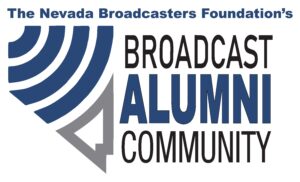Most years, at some point in January, we look into our crystal ball and try to see some of the legal and regulatory issues likely to face broadcasters. We already provided a calendar of the routine regulatory filings that are due this year (see our Broadcaster’s Regulatory Calendar). But not on that calendar are the policy issues that will affect the regulatory landscape in the coming year, and into the future. This year, the biggest issue will no doubt be the November election. Obviously, broadcasters must deal with the many day-to-day issues that arise in an election year including the rates to be charged political candidates, the access to airtime afforded to those candidates, and the challenges associated with the content of issue advertising that non-candidate groups seek to transmit to the public. The election in November will also result in a President being inaugurated in just less than a year – which could signal a continuation of the current policies at the FCC or potentially send the Commission in a far different direction. With the time that the election campaigns will demand from Congress, and its current attention to the impeachment, Congress is unlikely to have time to tackle much broadcast legislation this year.
The broadcast performance royalty is one of those issues likely on hold this year. While it was recently re-introduced in Congress (see our article here), it is a struggle for any copyright legislation to get through Congress and, in a year like the upcoming one, moving a bill like the controversial performance royalty likely will likely not be high on the priorities of Congressional leaders. This issue will not go away – it will be back in future Congresses – so broadcasters still need to consider a long-term strategy to deal with the issue (see, for instance, our article here on one such strategy that also helps resolve some of the music royalty issues we mention later in this article).
At the FCC, one would think that political broadcasting issues, like the reconsideration request we wrote about here seeking changes in the FCC’s recent controversial decisions on the disclosure of all issues and candidates in every non-candidate ad, would be high on the list of issues to be considered. But political issues are also complex – October’s decision on issue ad disclosures took almost 3 years to be released, after a prior Media Bureau decision on the same issues was rescinded in early 2017. Thus, it would not be at all surprising if these issues don’t get resolved this year.
Many people expected that we would see ownership reform in 2020– especially for radio. Last year, the FCC started its Quadrennial Review to look at these issues. But the September decision of the Third Circuit (see our articles here, here and here), overturning changes made in 2017, may have clouded the potential for any changes in the ownership rules this year. These issues can be controversial in an election year. But we have in the past seen FCC ownership decisions in the lame-duck period after an election but before a Presidential inauguration, so stay alert to what happens in this area.
In the interim, license renewal applications will trudge on, with TV starting to file their renewals in June of this year (starting with stations in Maryland, DC, Virginia, and West Virginia). So far, the FCC has been judicious in issuing fines for public file violations disclosed in a license renewal application, only fining those stations who totally ignored their obligations (see our stories here and here). We are waiting for the FCC’s patience to end – and would not be surprised to see the FCC become stricter in policing these issues in the future.
What other issues have we seen the FCC take comments on but not yet resolve? EEO was one area that generated lots of comments earlier in 2019 (see, for instance, our article here). But, with the FCC’s rulemaking notice being so general in its questions, and many of the proposals made in the proceeding so specific, if anything happens out of the proceeding, the most likely action would seem to be a further notice of a proposed rulemaking to give parties notice of any specific proposals the FCC wants to pursue.
For television, ATSC 3.0 looks to become a reality this year as stations begin to roll out the new technology and ATSC 3.0-compatible television receivers become available at consumer electronics stores. On the regulatory front, the FCC still has some issues to resolve, including dealing with stations that cannot find a partner station to provide a “lighthouse signal” in the current digital technology when they are ready to convert to the new standard. The TV band will also shrink, as the repacking following the incentive auction concludes in July – with all TV stations moved into the channels below 37.
The oldest of the broadcasting services, AM, will also possibly be looking at its own digital conversion – though the FCC will have to move very fast to get it done this year. The proposal to allow AM stations to convert to full digital operations has been formally advanced through a notice of proposed rulemaking, with comments due March 9 and replies on April 6 (see our articles here and here). The issues seem relatively simple, and for a voluntary conversion, relatively noncontroversial. A decision before the end of the year is possible, though such quick action would require everything to fall into place just right.
Some of the biggest issues for broadcasters may come not from the FCC, but from other agencies or courts. As we wrote here and here, the Department of Justice is considering changes to the antitrust consent decrees that govern ASCAP and BMI. Should the DOJ review reach a conclusion and suggest a radical restructuring or abolition of the current system, Congress would almost assuredly have to step in to take action. We’ll be watching closely to see if any action comes from the DOJ this year.
BMI is currently in rate court litigation with the Radio Music License Committee over the rates that radio stations should pay for the use of BMI music. That proceeding could result in higher fees for radio broadcasters. SESAC’s three-year license with the radio industry (see our article here) has also expired, meaning that if no new rates can voluntarily be arrived at, their rates will be decided by an arbitration panel. SESAC has added some new songwriters (including Adele), so you can be sure that they will want more money from the radio industry. And, of course, the litigation with GMR goes on, though it may not be concluded this year.
What will be concluded before the end of the year is the new rates that webcasters (including broadcasters who stream their audio signal on the Internet) will pay SoundExchange for the right to publicly perform sound recordings on a digital platform for the period from 2021 through 2025. The Copyright Royalty Board is currently considering proposals from music services and SoundExchange for new rates – SoundExchange looking for a significant increase while the services are looking for a decrease. A trial is scheduled for March, with a decision required by law before the end of the year.
With the election coming in November, the prospects for other “big” issues being tackled this year seem to be less than in most years. We have noted (see, for instance, or articles here and here), that the FCC has been very active in enforcing the rules that it does have – which may be a safe political course for it to pursue but one fraught with potential dangers for broadcasters and other regulated entities. But each year issues come up that surprise us, so watch the FCC releases, the trade press, this blog and others like it, and be ready for whatever regulatory issues may come your way in 2020.
Courtesy Broadcast Law Blog


